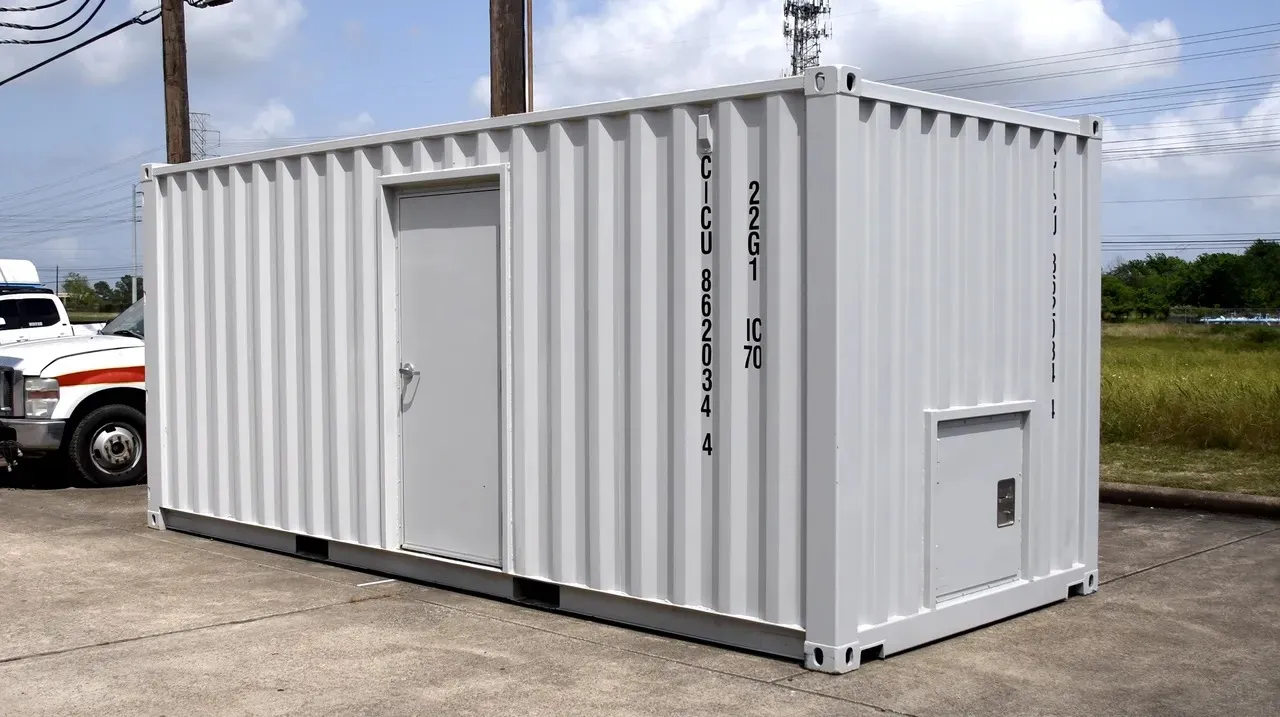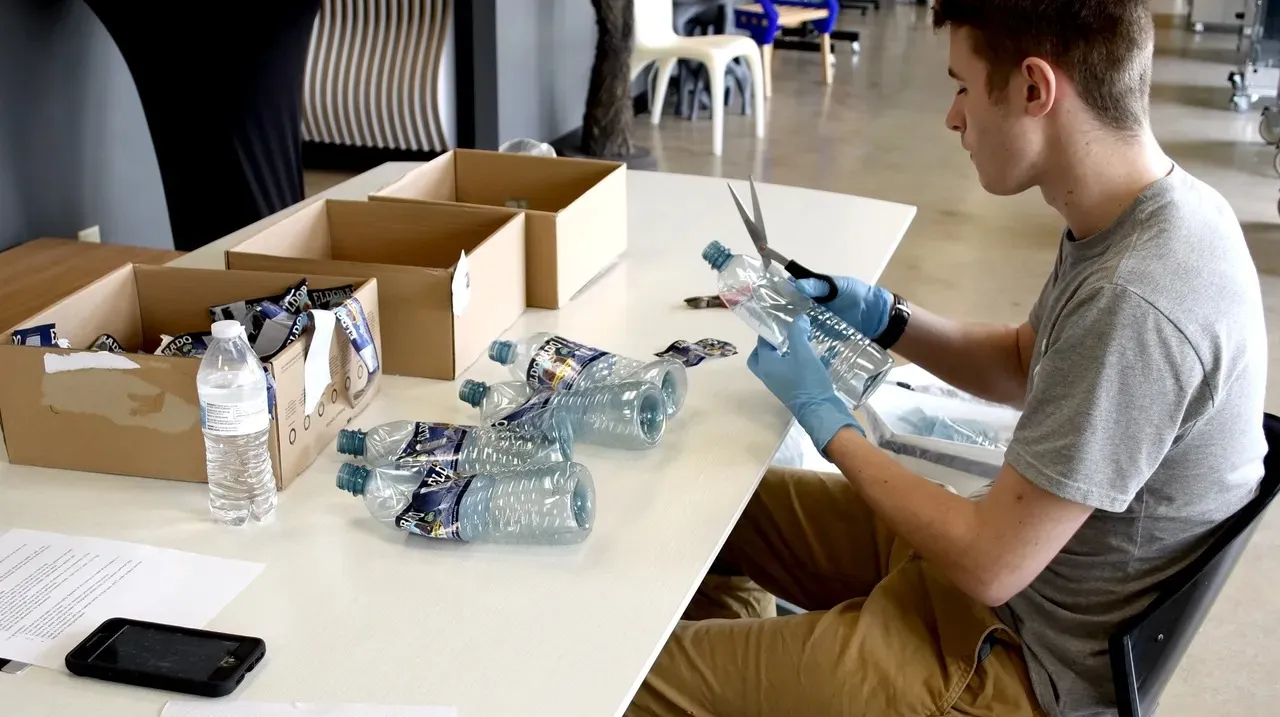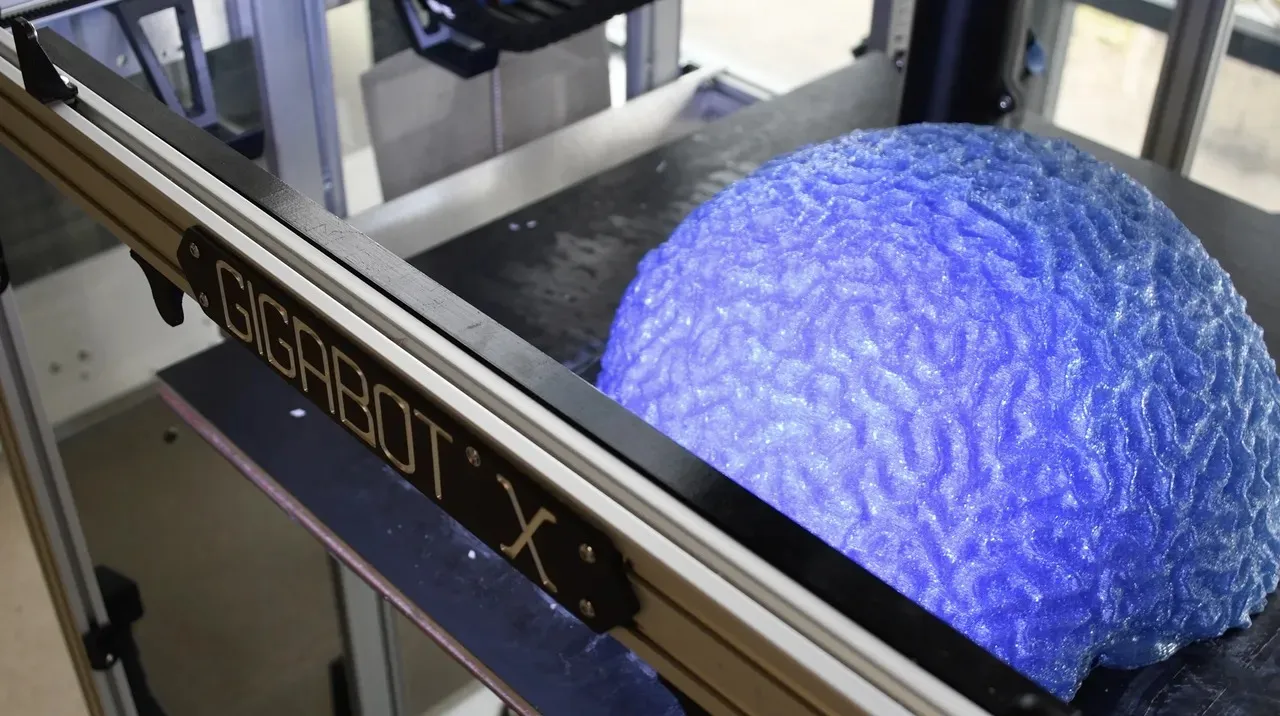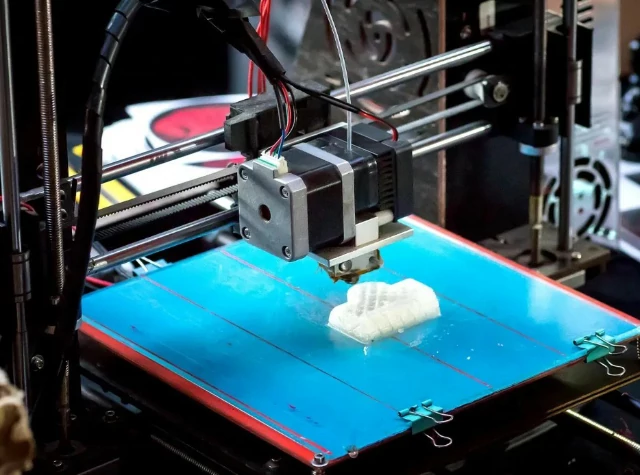Process plastic products such as used PET bottles into pellets and output other products with a 3D printer. The project “Gigalab”, which realizes such a recycling process with a single container, has recently been completed. Since various plastic products can be produced on the spot, it is expected to be implemented in areas in crisis such as disaster areas.
The coronavirus pandemic has disrupted supply chains. Not only did the normal transportation of supplies become difficult, but the global transport network was unable to supply enough personal protective equipment (PPE), such as masks for workers, to clear the backlog of supplies.
Around that time, re:3D, which developed and sold 3D printers, began looking for ways to solve the supply and transportation problems of personal protective equipment (PPE) such as face shields.
The result of these efforts is a project called “Gigalab”. At Gigalab, re:3D aims to provide a set of tools necessary to recycle PET bottles, plastic cups, and other materials into useful objects.
Gigalab is mainly composed of three elements. First, there is a crusher that shreds the used plastic and a dryer that removes excess water from the shredded plastic. And the 3D printer “Gigabot X” responsible for modeling. In addition, space on the workbench for cutting PET bottles is required.

The equipment will be packed in shipping containers and shipped anywhere in the world. Simply put, Gigalab is a mobile lab that turns trash into treasure.
Table of Contents
ToggleOn-the-spot “conversion” of plastics into pellets
To make this lab a reality, they first had to innovate a small step in 3D printing. That process is an extruder.
Many 3D printers use extruders to create objects. In other words, it heats the plastic, melts it, and dispenses it through a nozzle onto a table. If you’ve ever seen a home 3D printer, you’ve seen the plastic in filaments with strings.
On the other hand, there are also 3D printers that use resin pellets for modeling. Pellets that are processed into small granules or cylinders can be smoothly poured into the extruder. Yet it hardens easily and can be fed seamlessly into some 3D printers.
When recycled materials such as used PET bottles are made into pellets, they are typically transported to a plastic processing center. There, it is melted, molded into pellets, and transported to the place where it is needed (pellets lost during transportation may cause environmental pollution ).
However, re:3D’s 3D printer ” Gigabot X ” can omit the entire process of processing plastic into pellets. Unlike most 3D printers, the Gigabot X can take in shredded plastic flakes.
In other words, unlike pellets, even plastics that do not have a uniform shape and cannot be fed smoothly will not clog the nozzle, so molding will not fail. Gigalab’s crusher shreds the used plastic on the spot, so all you have to do is run it through the dryer to remove the water and then drop it straight into the Gigabot X’s slot.
The first materials that come to mind are plastic bottles and cups. But Gigalab can handle many other kinds of plastic products.
At a meetup at the world’s largest conference, SXSW (South by Southwest), held in Austin, Texas, re:3D showed us scraps of plastic used to print driver’s licenses. These plastics can also be shredded with Gigalab’s crusher, says re:3D ambassador Charlotte Clough. Even the support material needed for a successful 3D build can be cut and re-shredded for future builds.
“Especially during emergencies and natural disasters, producing supplies locally can help the community immediately, rather than waiting for outside help,” says Clough.
Gigalab can sculpt anything that can be made out of plastic. In fact, re:3D, like many 3D printer companies, started manufacturing parts for face shields and mask bands when the pandemic seemed to be in full swing. But Gigalab wanted to go a step further and see if the community could figure out what they needed and design and print it locally.
When I was given a tour of re:3D’s headquarters in Houston, I was shown a bucket for picking specialty coffee. It was designed with input from workers at Sandra Farm in Puerto Rico.
The farm previously used commercial five-gallon buckets or fertilizer sacks to transport coffee beans. Therefore, re: 3D incorporated the opinions of those who worked in the field, shaped a deeper bucket with a 3D printer, and changed it to a shape that fits the waist. It also comes with a shoulder strap for easy carrying.
With Gigalab, all of these essentials can be manufactured locally (this Puerto Rico project went public in 2020 ).
Read Also: What Is The Goal Of The Metaverse Standard?
Bringing economic benefits to recycling
Even though it’s all in one package, shredding plastic doesn’t come without a fuss. Human hands are needed to separate plastics. The used plastic container must also be washed with water.
According to Clough, it’s not as difficult as washing the dishes. During a tour of the Houston facility, I was shown workers removing labels from plastic bottles and carefully cutting away the glued-on areas.

This kind of work can be done by anyone anywhere, without having to rely on dedicated machines in large-scale processing centers that may be far away. Hypothetically, if there is a large amount of used plastic available, basically any place can be turned into a plastic recycling facility.
Joshua Pearce of the John M. Thompson Center for Engineering Leadership & Innovation at the University of Western Ontario in Canada calls the model “distributed recycling and additive manufacturing.” And Pierce says the model could be game-changing.
“Plastic is ubiquitous, but most of it isn’t recycled today because it doesn’t make sense economically,” says Pearce. “The farther away the recycling center is, the more low-density plastic we have to transport. But if we can recycle it into something that is needed or sold locally, it makes economic sense.”
In fact, two Gigalabs will be installed at the US Air Force Academy later this year. And the plastic used in the academy’s cafeteria will be reborn as something you need.
One example is the airplane that cadets design in class. “The cadets design a small airplane, 3D print it, put a small engine in the rear, fly it, measure flight data, and learn aerodynamics,” Clough says. explains.
re:3D is already using plastic waste collected from the Air Force Academy. Clough describes the experience of re:3D co-founder Samantha Snaves. “Snaves collects the plastic that cadets use to eat their lunches in the academy cafeteria. ”
With a Gigalab installed at the military academy, there will be no need to ship this used plastic.
re:3D is exploring whether this technology can be used to regenerate coral reefs. In Puerto Rico, the makerspace Engine-4 has already introduced the re:3D printer “Gigabot 3+”, but they are trying to 3D model coral in collaboration with the REEF3D Project. The idea is to put it on the seafloor and encourage the regeneration of marine biota.
According to Clough, the project currently uses externally sourced plastic, which is not recycled. “We want to put a Gigalab there with a Gigabot X 3D printer and an extruder, so we can reuse the polylactic acid (PLA) that was used locally,” says Clough..
The ultimate goal is “local production for local consumption” recycling
Gigalab is ready to leave for this world of vaporware. The extruder that uses plastic as a material is already complete.
At a meetup held in Austin in 2022, I saw a 3D printer in front of a pub busily modeling. What was thrown in there was a piece of renewable plastic shredded into flakes. All the equipment needed to process the material is housed in a shipping container, with space for a workbench.

Gigalab is designed to be self-sufficient with renewable energy even when not connected to the grid. In other words, it can be used anywhere in the world, including remote islands. Most of the products on remote islands have to be brought in from outside, and it is not easy to build a factory for plastic products on the island.
Of the Gigalab’s design, Clough explains that it’s still largely an electrical design. For this reason, first-generation models will use diesel, gasoline, and natural gas-fueled generators. But Gigalab, which will be installed at the Air Force Academy, says it wants to be powered by portable wind turbines.
Pierce of the University of Western Ontario also notes that the concept could be useful in areas of humanitarian crisis. Some companies have already brought 3D printers to such places to produce the necessary supplies locally. “In such a situation, it is easy to imagine a scene in which many re:3D Gigalabs are introduced locally and things start to be created immediately.”
In fact, PET bottles filled with safe drinking water supplied in disaster areas are ideal materials for 3D printing in the field. As Pearce points out, using plastic bottles with different treatments brought in from different regions can lead to poor quality end products. Sometimes it fails and the material is wasted.
But pellets, washed and crushed from uniform-source bottles, are the perfect raw material for on-site 3D printers. “Using the same quality of plastic, you could potentially make a much higher quality tool.”
Gigalab is just getting started. However, re:3D hopes that in the future, the technology will allow the community to design what they need and build it out of their own trash, all in one place.
re:3D has open-sourced the Gigalab blueprints, and the STEP files and electrical wiring diagrams can be downloaded here. This means that anyone can reuse the design.
Communities are much better at determining what they need than outside agencies. That’s when Gigalab really shines.

